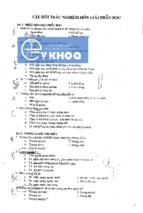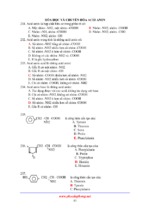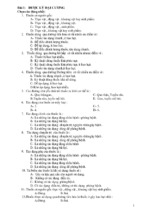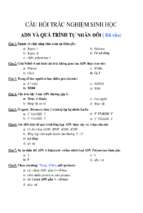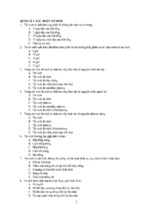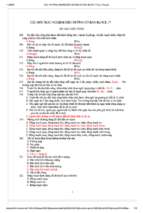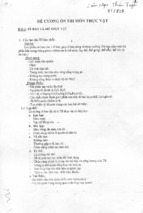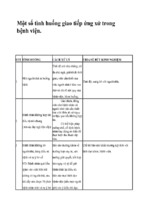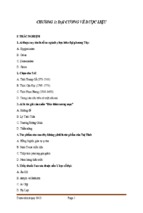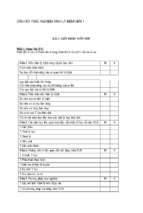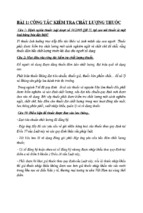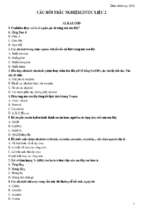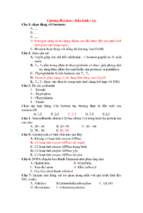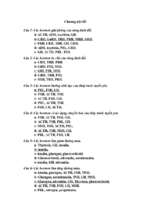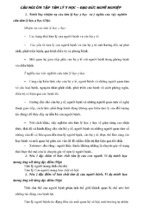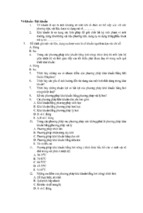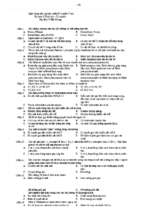High Blood Pressure - Hypertension
Hypertension (HT) is commonly called high blood pressure, nowadays (2005 on) defined
as above 140/85 mm Hg; or if one is a diabetic, over 135/80. About 38% of UK adults have
hypertension. Advice and treatment includes exercise, lifestyle changes, and / or diet changes,
as well as drugs.
Possibly as many as 16 million UK people have high blood pressure, and the proportion
of the population is slowly increasing over the years. About 5% have an obvious underlying
cause such as kidney disease. Most of the rest have no single obvious cause. Some have a
genetic component, with hypertension tending to run in families. In addition there are
environmental and lifestyle factors. The most important causes are being obese, smoking, too
much alcohol, too much salt, stress, lack of exercise, poor diet, too little potassium, and family
history of relatives with hypertension. Oily fish with omega-3 fatty acids is protective against
high blood pressure and heart disease.
Five self-help measures are suggested:
§ Avoid being overweight
§ Reduce salt intake
§ Keep alcohol down
§ Exercise can reduce your blood pressure and help to keep your weight down. Start slowly and
build up. Walking is excellent. Aim for 20 to 30 minutes’ activity at least three times a week. Or
even better than more intense exercise for a shorter time.
§ Don’t smoke
For questions 1-10, decide whether the statements are true(T) or false (F).
Hypertension means high blood pressure............................................................................True
In the coming years the number of UK people having high blood pressure will reach 16 million.
.......................................................................................................................................... False
A person having blood pressure over 135/80 mm Hg is in the condition of HT..................False
A person with high blood pressure cannot be treated because there are no drugs...........False
One of the causes of HT is kidney disease.........................................................................True
Family factor is considered as one of the causes of HT......................................................True
An overweight person may easily get the risk of high blood pressure.................................True
It is advised that you don’t need to use salt in your diet.....................................................False
It is suggested that you don’t smoke too much..................................................................False
Walking is the good way to help keep away from HT...........................................................True
Diabetes mellitus
W, a 14-year-old boy on holiday in the locality, was brought into Accident and
Emergency (A & E) by his worried parents. Prior to admission he had complained of
tiredness,insomnia and his mother had noticed that despite a good appetite he had become
thinner. On the morning of admission he suffered abdominal pain, nausea and vomiting, his
breathing had become irregular and at times he appeared semiconscious. Further questioning
of the parents indicated the patient had recently developed polydipsia and polyuria.
On admission he was conscious and hyperventilating;he was dehydrated and his breath
had the fruity odour of ketones. Blood and urine samples were analysed and quickly indicated
clinically significant levels of glycosuria, hyperglycaemia and ketonaemia. W's condition was
diagnosed as diabetic ketoacidosis and emergency treatment was commenced.
Vital signs on admission
Pulse Oral temp BP110/70
98 per minute 36.0°C
Blood glucose Urine 3+ Hyperventilating
28 mrnol/litre ketones
He was given an initial intravenous infusion of 6 units of soluble insulin followed by 6
units hourly. His fluid and electrolyte loss were replaced by an intravenous saline infusion. His
blood glucose was monitored hourly and electrolytes 2 hourly in the initial phase of treatment.
When his blood glucose reached its normal value, he was given a saline infusion of 5%
Dextrose containing 20 mmol KCL litre-1. The dose of insulin was adjusted according to the
hourly blood glucose results.
W's parents were informed their son was suffering from Type 1 diabetes mellitus also
known as insulindependent diabetes mellitus (IDDM), a chronic incurable condition brought on
by a failure of the pancreatic islets to produce insulin.
Once recovered from his acute attack he was referred to the diabetic clinician for advice
on insulin therapy and his GP was informed. He responded well to advice, and now selfadministers two daily injections of insulin. His regimen was adjusted to avoid hypoglycaemia
and give good glycaemic control. Both injections consist of a mixture of short and intermediateacting insulins, the first before breakfast and the second before his evening meal.
Islets...................................................small islands of cells that secrete insulin in the pancreas
Ketoacidosis.......................................................................abnormal acidity caused by ketones
Ketonaemia..............................................................................condition of ketones in the blood
Hyperventilating......................above normal ventilation rate in the lungs (rapid deep breathing)
Electrolyte..........................................regulated scheme (e.g. of taking drugs,/medication)
Polydipsia...................................................................................condition of too much urine
Hyperglycaemia..........................condition of above normal concentration of sugar in the blood
Glycosuria......................................condition of below normal levels of sugar in the blood
Regimen.........................................................................condition of too much/excess thrist
Insomnia.........................................................................................condition of inability to sleep
Partially
Coronary Heart Disease
Coronary heart disease is the end result of the accumulation of plaques within the walls
of the arteries that supply the muscle of the heart with oxygen and nutrients. The symptoms and
signs of coronary heart disease are noted in the advanced state of disease. But most individuals
with coronary heart disease show no evidence of disease for decades. The disease progresses
unnoticed until the first onset of symptoms, often a "sudden" heart attack, finally arise. After
decades of progression, some of these plaques may rupture and start limiting blood flow to the
heart muscle.
The disease is the most common cause of sudden death, and is also the most common
reason for death of men and women over 20 years of age. According to present trends in the
United States, half of healthy 40-year-old males will develop coronary heart disease in the
future, and one in three healthy 40-year-old women. According to the Guinness Book of
Records, Northern Ireland is the country with the most occurrences of coronary heart disease.
1. How long can coronary heart disease go unnoticed?
a. For 10, 20 or 30 years
b. Until someone is 40 years old
c. Until plaque accumulates in arteries
d. Until oxygen and nutrients are supplied to the heart
2. Coronary heart disease can progress suddenly.
False
3. Coronary heart disease is more prevalent among women than men.
False
4. Coronary heart disease is the most common cause of death.
False
5. Coronary heart disease restricts the supply of oxygen and nutrients to the heart.
True
6. It is predicted that one in two American men will probably develop coronary heart disease in
their forties in the future.
True
7. The word "rupture' is closest in meaning to ________.
a. segregate
b. burst apart
c. integrate
d. prevail
AGING AND THE HEART
The heart muscle becomes less efficient with age, and there is a decrease in both
maximum cardiac output and heart rate, although resting levels may be more than adequate.
The health of the myocardium depends on its blood supply, and with age there is likelihood that
atherosclerosis will narrow the coronary arteries. Atherosclerosis is the deposition of cholesterol
on and in the walls of the arteries, which decreases blood flow and forms rough surfaces that
may cause intravascular clot formation.
High blood pressure (hypertension) causes the left ventricle to work harder; it may
enlarge and outgrow its blood supply, thus becoming weaker. A weak ventricle is not an efficient
pump, and such weakness may progress to congestive heart failure; such a progression may be
slow, or may be rapid. The heart valves may become thickened by fibrosis, leading to heart
murmurs and less efficient pumping. Arrhythmias are also more common with age, as the cells
of the conduction pathway become less efficient.
A variation in the rhythm of the heartbeat ..................................................................Arrthymia
Grow too big to be able to fit into something ...............................................................Outgrow
Hardening of the arteries ....................................................................................Atheroclerosis
The volume of blood expelled by each ventricle in a specific time: ...................Cardiac Output
The process of replacing damaged tissue by scar tissue .............................................Fibrosis
Unusual sounds in the heart ...............................................................................Heart murmur
More about the lungs and respiratory system
Breathing patterns are altered when there is infection, disease, blockage, or injury to the
respiratory system. the ability of the lung to accommodate a sufficient intake of air is known as
pulmonary capacity. This is measured in terms of volume. Several types of lung volumes are
used to assess and diagnose the health or illness of the lungs. These include inspiratory
volume, functional residual volume, vital capacity and total capacity. The rate at which the lungs
inflate and deflate (the ventilation rate) can be affected by infection or other disease and by
various other stimuli. Factors that may increase the rate and depth of ventilation include
increased or decreased levels of arterial blood gases, an increase in prolonged pain, and a
decrease in blood pressure. factors that can decrease or inhibit the rate and depth of ventilation
include severe pain causing apnea, decreased body temperature, increased blood pressure,
and increased levels of arterial blood gases.
Health professionals recognize the importance of assessing for and ensuring adequate
oxygenation for health and healing. Any impairment in the respiratory system, particularly the
lungs, adversely affects every other organ and cell of the body. Disease of any part of the lung
can affect the ph balance of the body. The term pH stands foe the potential hydrogen in the
body. Human blood is rated at 7.4 on the pH scale. A reading of less than 7 (<7) indicates an
acidic imbalance called acidosis; while a reading of greater then 7 (>7) indicates alkalinity.
The respiratory system has its own capacity to protect itself from toxins, viruses,
bacteria, and other disease-causing agents. This is accomplished through the system's ability to
secrete mucous. It is the system's most significant protective mechanism. Mucous traps toxins
and attempts to isolate or expel them. It is then expelled from the body by the process of
sneezing and coughing. Phlegm, on the other hand, is a sticky secretion of mucous that
originates only in the lungs. When expelled by a cough, it is referred to as sputum.
Find a word in the reading text means "changed": Altered
What is "pulmonary capacity"?
A. The ability of the lung to have a sufficient intake of air
B. The ability of the air to enter the lung
C. The ability of the lung to accommodate the extra air volume
D. The ability of the lung to expel air out of its capacity
Doctors can use the lung volume to identify some problems of the lung.
True
Increased or decreased levels of arterial blood gases can increase the rate and depth of
Ventilation
Infection, various stimuli affect
affect how the lungs inflate and deflate
Decreased body temperature
decreases the rate and depth of ventilatio
Decrease in blood pressure
increases the rate and depth of ventilation
Any impairment in the respiratory system affects
A. the pH balance of the body and one particular cell of the body
B. None are correct
C. the pH balance and other organs, and cells of the body
D. the pH balance and one particular organ of the body
what does the term pH stand for ?
potential hydrogen
What helps the lungs to protect from pathogens?
A. Phlegm
B. Mucous
C. Sputum
When you catch a cold, you tend to feel miserable. You are tired of sneezing and blowing your
nose ___1___ the time. When someone in your house has a cold, you are ___2___ to get it too.
This is because the cold virus ___3___ easily. ___4___ a person who has a cold blows his
nose, his ___5___ could carry the cold virus. This virus is then deposited ___6___ whatever he
touches such as doorknobs, telephone handles ___7___ shower handles. people who also
touch the surfaces of ___8___ things and then clean their nose would obtain the virus as well.
To ___9___ your cold from spreading, here is a piece of good ___10___ : wash your hands with
soap and water frequently ___11___ that the cold virus would have ___12___ chance to
survive.
There is no actual ___13___ for the common cold. The medicine that you take makes you feel
___14___ but it cannot ___15___ rid of the cold virus completely. Most people tend to recover
___16___ colds within a week. When you have a cold, the best thing to do is to get ___17___ of
rest. You should go to bed early and not over exert ___18___ .You must also ___19___ more
water as fluids help to cool the throat ___20___ relieve nasal passages.
1. all 2. likely 3. spreads 4. When 5. hands 6. on 7. or 8. these 9. prevent 10. advice
11. so 12. no 13. cure 14. better 15. get 16. from 17. plenty 18. yourself 19. drink 20.
and
Reading Practice, Y2 (2015)
Passage A: The sudden blocking of an artery by a clot is referred to as an embolism. Thrombi
as well as other foreign materials, such as fat, air and infective material can cause emboli.
(embol/o refers to an embolus, e.g. as in embolectomy.)
The development of enzymes that can dissolve blood clots in situ has led to the
development of thrombolytic therapies. For example, the drug streptokinase, extracted from
bacteria, can be injected into the coronary vessels to lyse a clot and thereby restore blood in the
coronary system. The thrombolytic drugs streptokinase, altepase and anistreplase have all been
shown to reduce mortality when given by the intravenous route following a heart attack (acute
myocardial infarction)
Embolism
is caused by “embol/o”.
is similar to embolectomy
is formed by a clot
is one of the foreign bodies
Regarding enzymes, what does the passage 1 mention?
They can dissolve in blood
They develop so quickly
They are the reason for a type of treatment
They are used in thrombolytic therapies
What are streptokinase, altepase and anistreplase?
a. They are drugs of all blood diseases
b. These drugs are taken orally
c. These drugs help to prevent disability
d. They are used for patients with heart attack
Passage B: The term atheroma means a porridge-like tumour and is used to indicate the
presence of fatty plaques in the lining of arteries. Atheroma is a common disorder of blood
vessels and the presence of such deposits is often related to aspects of one’s lifestyle such as
smoking, lack of exercise and diets rich in certain types of fat. Atheroma in coronary arteries
increases the chance of their becoming blocked, thus predisposing the heart to myocardial
infarction.
Atherosclerosis is a common form of arteriosclerosis that results from the presence of
atheroma and calcification in vessel walls. Contributing factors to the development of this
condition include advanced age, diabetes, high-fat and high-cholesterol diets, hypertension and
smoking.
What causes atheroma?
Fatty plaques on the inner walls of arteries
Unhealthy lifestyles
A porridge-like tumour
Deposits in the lining of arteries
What does the underlined word “predisposing” probably mean?
increasing
blocking
preventing
causing
Which does NOT contribute to atherosclerosis?
Abnormally low blood pressure
Aging
Cigarette smoke
Calcification
Passage C: A sphygmomanometer is an instrument that uses a manometer to measure blood
measure. Two pressures are measured: the systolic pressure when the ventricles of the heart
are forcing blood into the circulation, and the diastolic pressure which is the pressure within the
vessels when the heart is dilating and refilling.
The sphygmomanometer can be used to detect hypertension, i.e. a persistently high arterial
blood pressure, or hypotension, an abnormally low blood pressure. Both of these conditions
have a variety of causes.
The stethoscope is used in conjunction with the sphygmomanometer to listen to the sounds
made by blood flowing through the brachial artery when recording the blood pressure.
The pressure in which blood is forced into circulation is called diastolic pressure
False
The diastolic pressure happens when the heart is dilating and refilling
True
Hypotension means low blood pressure
False
A sphygmomanometer and a stethoscope can be used together to measure the blood pressure.
True
1. As anantioxidant Vitamin C can be used to treat
All of these
hepatitis
heart disease
common cold
2. Vitamin C play an important part in the processes of
protein synthesis
cartilage formation
All of these
iron absorption
3. The mechanism of by which Vitamin C fight common cold is
entirely clear
has been proved
its
debatable
4. Which of the following is NOT true?
High doses of Vitamin C can be safe for most people
Vitamin C is believed to reduce the risk of heart disease
Antioxidant effects of Vitamin C result in its many uses in prevention and
treatment of diseases
Vitamin C can strengthen the body’s defence against diseases
5. Which one is NOT a side effect caused of vitamin C?
sleeplessness
malnutrition
bringing up food
nephrolithiasis
Find words in the text which mean:
the armpit: __________ axilla
removal and examination of living tissue: _______________ biopsy
treatment with chemicals i.e. cytotoxic drugs that kill cancer cells: _________________
chemotherapy
study of tumours/cancers: _________________ oncology
technique of using X-rays to image a section through the body: _________________
computerized tomography
enlargement of the spleen: ______________ splenomegaly
disease of the lymph glands i.e. lymph nodes: ______________ lymphadenopathy
Study of disease of tissues (here refers to a section of the pathology laboratory):
________________________ histopathology
Inflammation of the tonsils: ________________ tonsillitis
1. The thyroid gland is called an endocrine gland because it
a. secretes directly into the bloodstream
b. has ducts
c. is located in the neck
d. has lobes
2. The bold word “it” in paragraph 2 refers to
a. thyroxine
b. blood
c. thyroid gland
d. iodine
3. A cretin is
a. a child with hyperthyroidism
b. a young person with hypothyroidism
c. an extremely irritable child
d. an adult with an underperforming thyroid gland
4. Which of the following is a probable result of myxedema?
a. Sluggishness
b. Perspiration
c. hyperactivity
d. Overproduction of thyroxine
5. In paragraph 3, the bold word “former” refers to
a. hyperthyroidism
b. secretion
c. overactive thyroid
d. hypothyroidism
6. A goiter is
a. an underactive thyroid gland
b. a swollen thyroid gland
c. a person with myxedema
d. a chemical
7. Exocrine and endocrine glands are distinguished from each other by whether they
a. result in an enlarged or shrunken goiter
b. cause myxedema or cretinism
c. cause hyperthyroidism or hypothyroidism
d. secrete through ducts or without ducts
8. In paragraph 1, the word “secrete” is closest in meaning to
a. absorb
b. indiscernible
c. display
d. emit
9. If a thyroid is not working enough, the illness is known as
a. hypothyroidism
b. hyperthyroidism
c. hyperactivity
d. excretion
10. The main idea of the passage is
a. the illnesses of an overactive thyroid gland
b. secretion with and without glands
c. the function and illnesses of the thyroid gland
d. how glands work
11. The function of the thyroid gland is described in paragraph
a. 2
b. 1
c. 3
d. 4
- Xem thêm -

